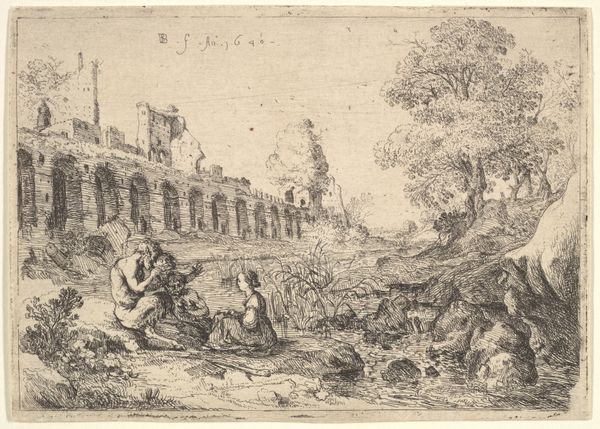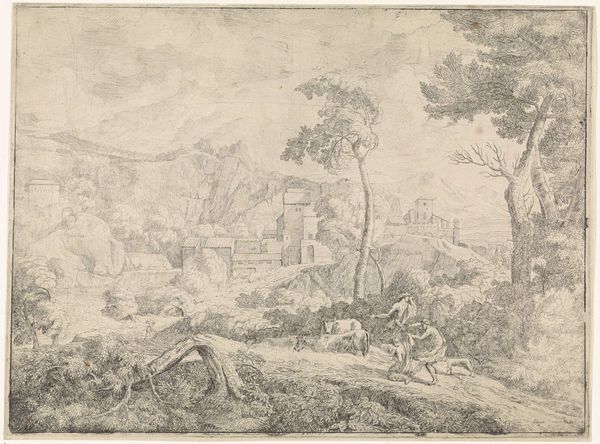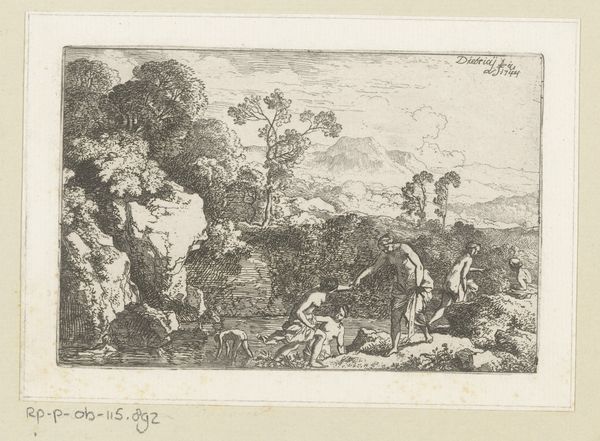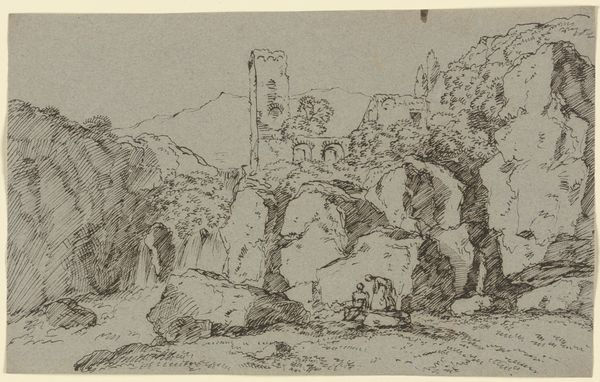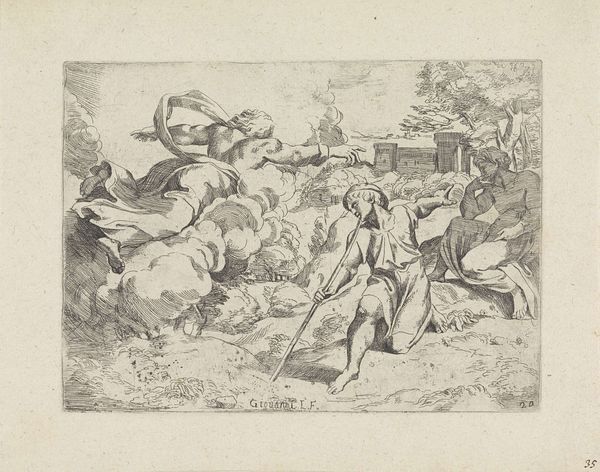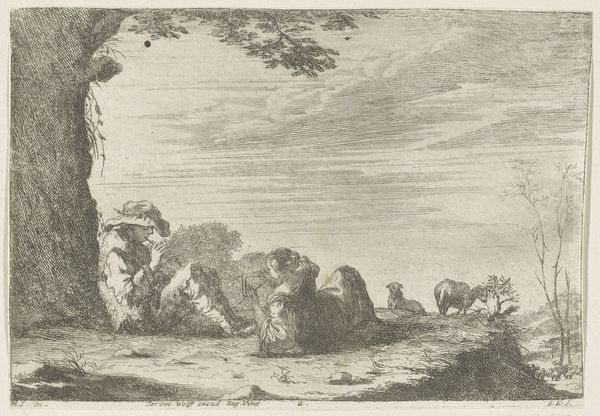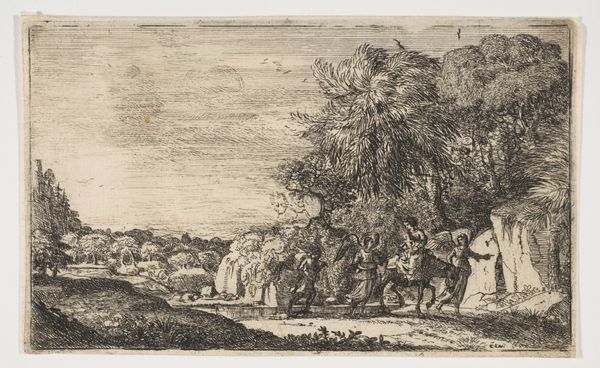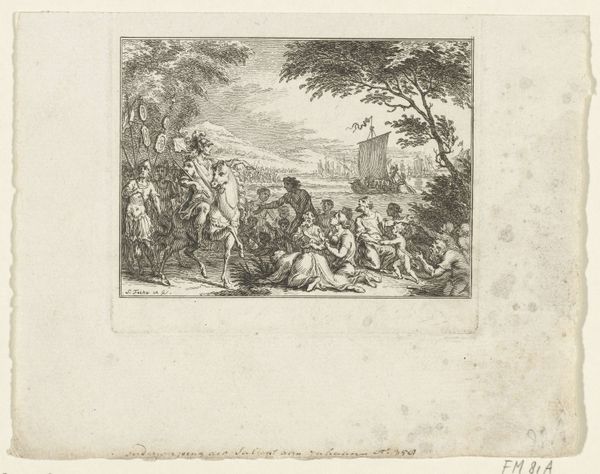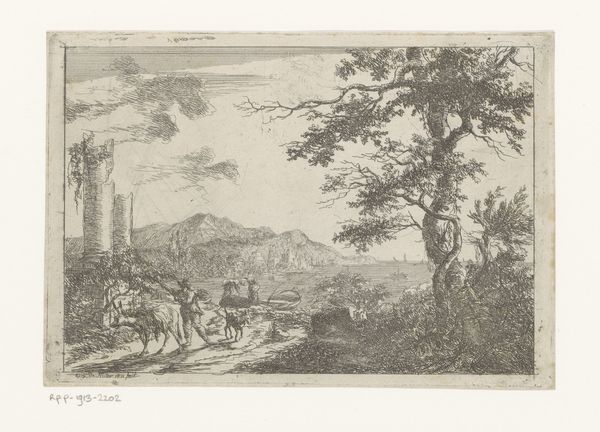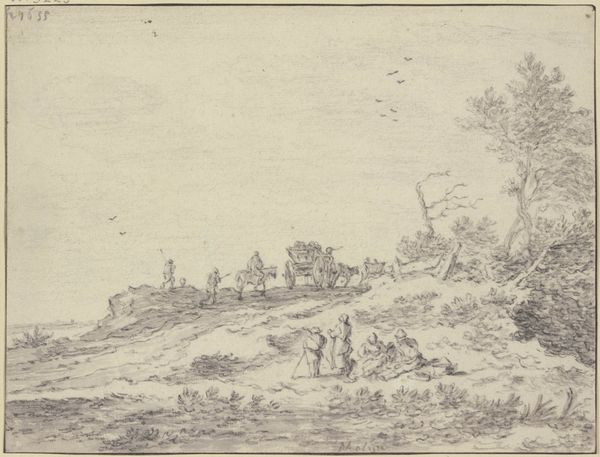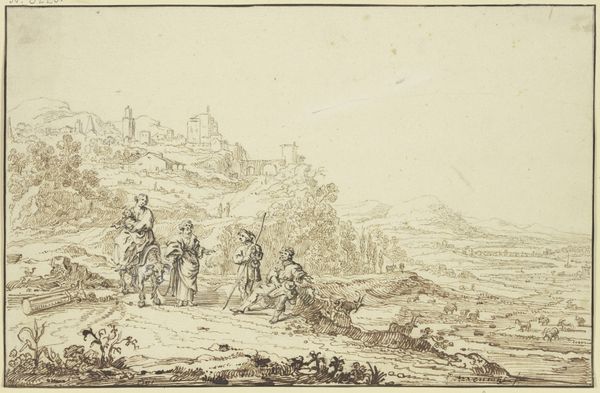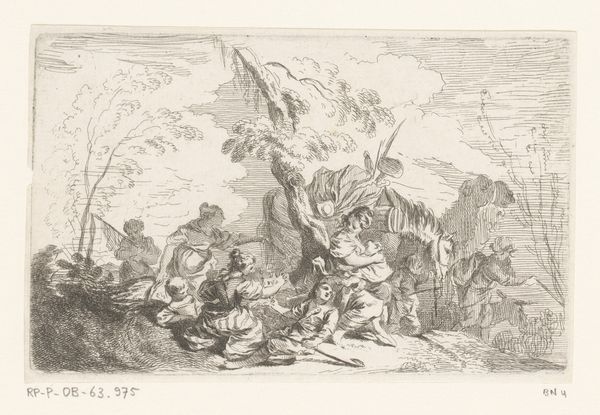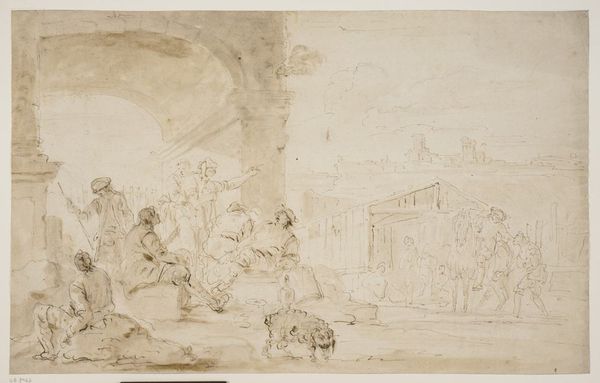
print, etching
#
baroque
# print
#
etching
#
landscape
#
etching
#
history-painting
Dimensions: height 104 mm, width 140 mm
Copyright: Rijks Museum: Open Domain
Editor: Here we have Johann Wilhelm Baur's "Aarde," an etching from around 1631-1632. The figures seem posed and theatrical, yet there's a strange wildness to the landscape. How do you interpret this work? Curator: What strikes me is how Baur uses classical imagery—the personification of Earth with wheat, the Roman ruins—but complicates it. Are these ruins symbols of a lost, idealized past? And who gets to participate in that idealized version of the past, anyway? Look at the figures; what power dynamics are at play here? Editor: It feels like he's setting up a contrast, like a conversation between order and chaos? Curator: Precisely. The etching allows for a reproduction of a concept. It's a visual statement, of course, but can we understand this artwork as a representation of Earth filtered through a distinctly European, patriarchal lens? How does the dominance of Western art history impact how we engage with nature, represented by 'Aarde' here, even today? Editor: I never thought of landscape in terms of power dynamics before! It's almost like the cultivated elements try to control the natural ones... and people within it. Curator: Exactly! What seems like a simple depiction of "Earth" actually unveils complex relationships between civilization, nature, and who controls both. Editor: So it’s about critiquing, as well as presenting beauty? It feels relevant even now. Curator: Art constantly invites re-evaluation of the power structures embedded in our society and shapes the cultural understanding. Editor: That really changes how I see not just this piece, but landscape art in general. It’s a conversation starter!
Comments
No comments
Be the first to comment and join the conversation on the ultimate creative platform.
